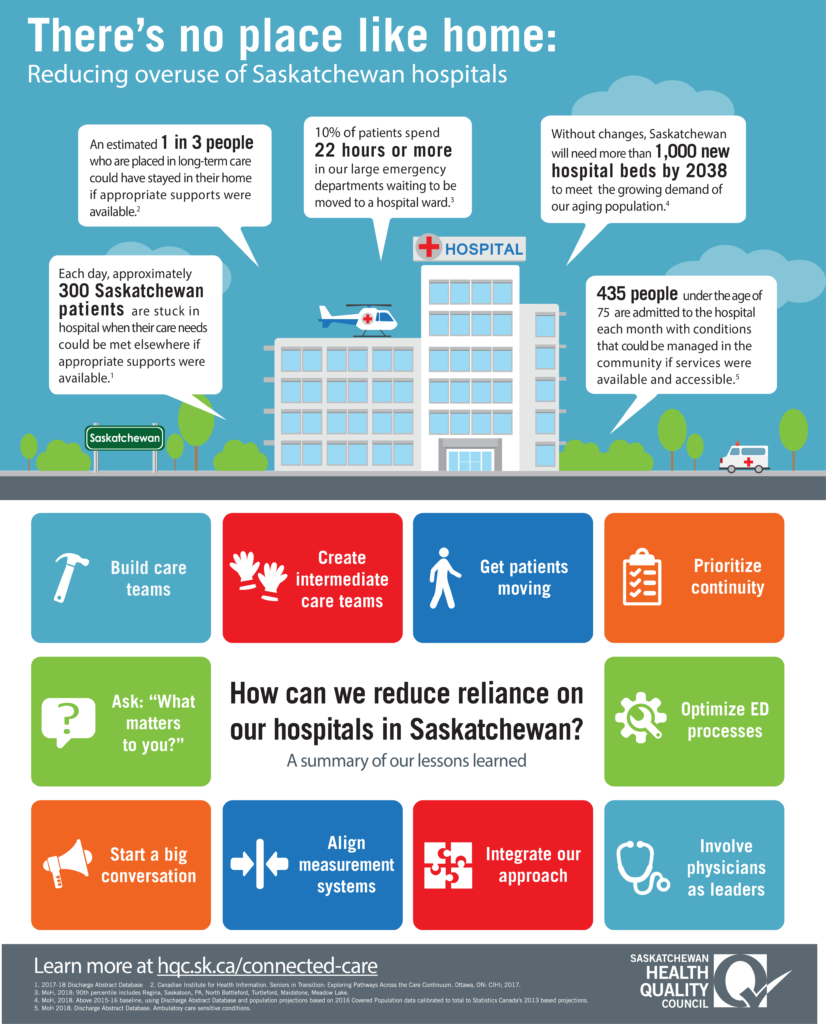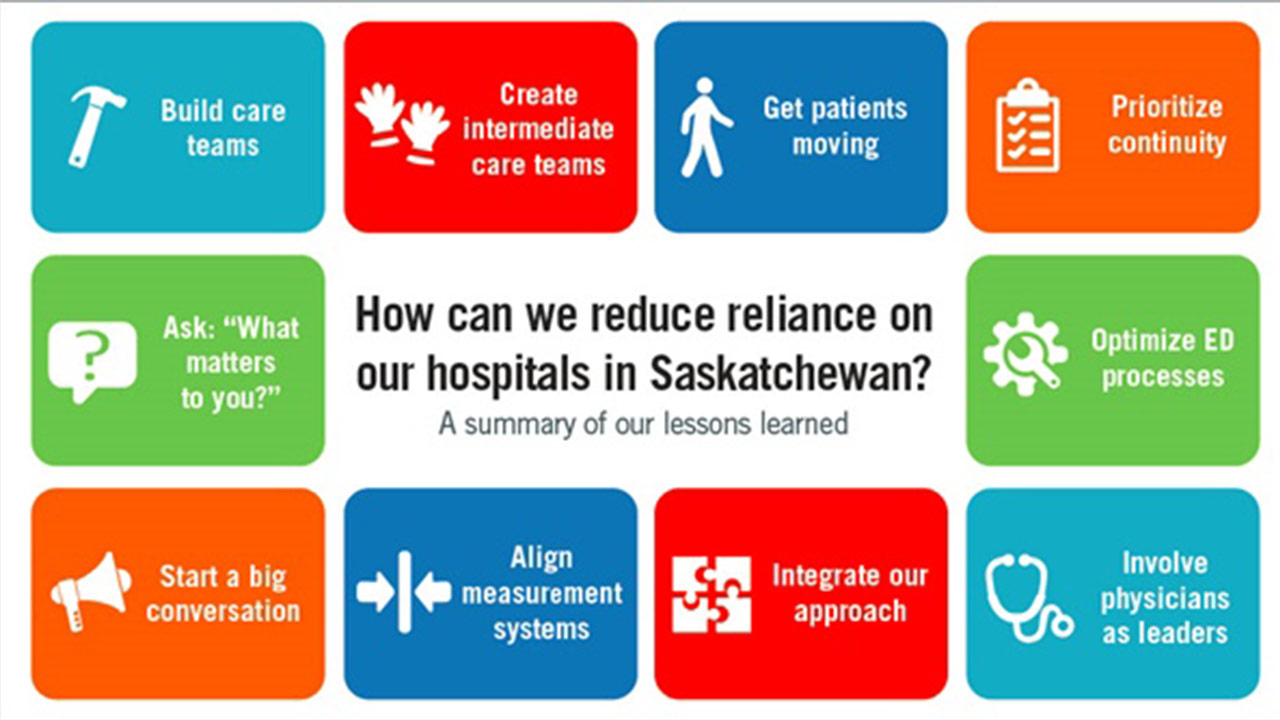Why are emergency department waits a focus in Saskatchewan?

Long waits in emergency departments challenge health systems all over the world. According to the Canadian Institute for Health Information, in Canada, the emergency department length of stay for people admitted to hospital in 2016-2017 was up 11% from the year before and almost 17% from five years ago. Much has been done, written, and researched in an effort to solve the problem – including right here in Saskatchewan.
For many years, people believed the problem was based in Emergency, so that was where the solutions would be found as well. However, we now know that long waits in emergency are in fact a symptom of bigger problems – including our historic reliance on acute care hospitals and the need for different services and programs that better meet patients’ care needs closer to home in the community.
There is no “magic bullet” that will fix emergency department waits in Saskatchewan. But there are several things we can start doing to improve how the different parts of our health system work together better to serve patients. Some changes are major and will require a lot of effort and reform. But others are smaller and could be started on tomorrow. Regardless of the scale or complexity of the changes though, everyone working in health care can play a role in improving continuity and coordination of patient care.
What is the Lessons Learned Infographic?
Through the work we’ve done in Saskatchewan over the last five years to address emergency department waits, we have identified a number of potential solutions to the problem. For an in-depth review of our key lessons learned, check out the Connected Care Summary of Learnings from Emergency Department Waits and Patient Flow Initiative document. We have also created a visual summary of our learnings that we call the “Lessons Learned Infographic”; you can use it to start the conversation, “How can we better understand the challenges in our system and work together to solve them?”
The Lessons Learned Infographic

Click here to download the infographic
How you can use the Lessons Learned Infographic
We encourage you to use this infographic to initiate conversations in your workplaces. Talk to your leaders. Print it out and post it in your coffee room. Share it with your colleagues. Bring it to planning meetings. Talk to your quality improvement specialists. You can even incorporate some of the improvement ideas into your individual or team work plans. The infographic can help you to start asking and discussing the following questions:
- What issues do you see that affect care continuity where you work in the system?
- What relationships or processes could be improved to ensure patients are getting the right care, at the right time, in the right place, by the right providers?
- How can primary care practices, community health services, and hospitals work together more efficiently and effectively to offer patients a seamless care experience?
Learn more about Connected Care in Saskatchewan
If you want to learn more about Connected Care in Saskatchewan, you can:
- Watch the QI Power Hour webinar: 10 “Simple” Ways to Improve Patient Care: Lessons Learned from Saskatchewan’s Emergency Department Waits and Patient Flow Initiative
- read the discussion paper: Connected Care Summary of Learnings from ED Waits and Patient Flow Initiative
- read the online guide to Improving Continuity of Care
- contact HQC to learn more
Infographic References:
1. 2017-18 Discharge Abstract Database
2. Canadian Institute for Health Information. Seniors in Transition: Exploring Pathways Across the Care Continuum. Ottawa, ON: CIHI; 2017.
3. MoH, 2018: 90th percentile includes Regina, Saskatoon, PA, North Battleford, Turtleford, Maidstone, Meadow Lake.
4. MoH, 2018. Above 2015-16 baseline, using Discharge Abstract Database and population projections based on 2016 Covered Population data calibrated to total to Statistics Canada’s 2013 based projections.
5. MoH 2018. Discharge Abstract Database. Ambulatory care sensitive conditions.
Read the Connected Care discussion paper




